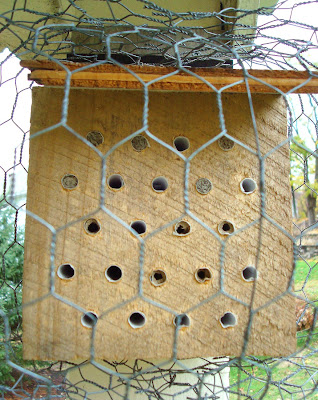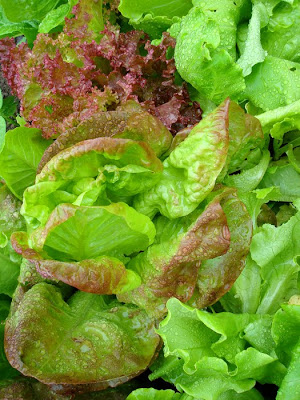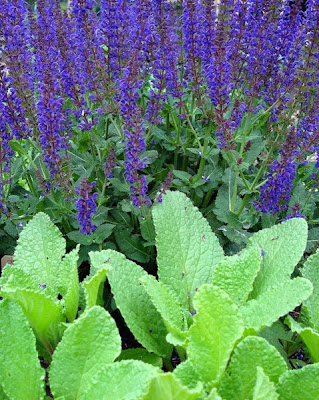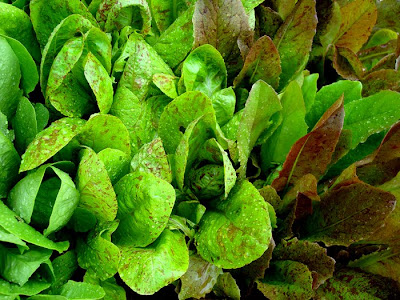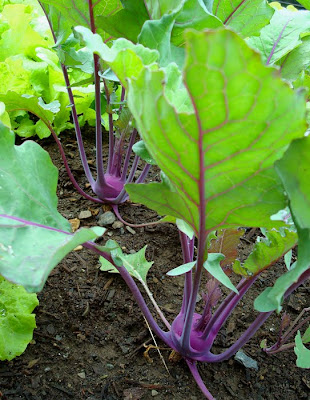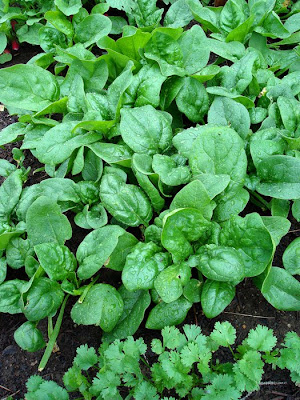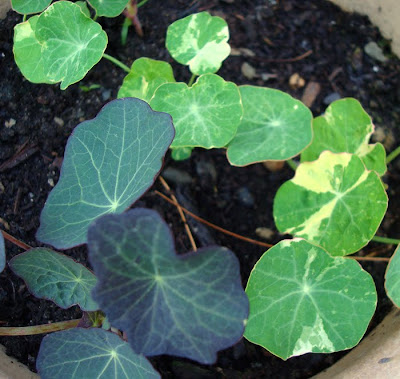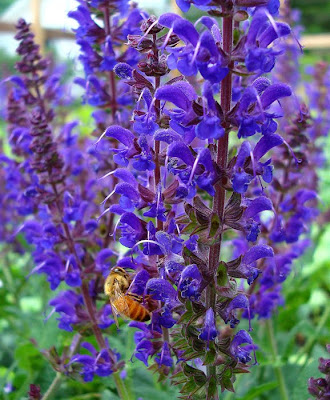Well it's just about the end of June now, Summer is here. The vegetable garden is bursting full. Here, the bee's borage is stealing the scene at the front of the middle bed, a three foot high constellation of pure twilight colored flowers, looking like blue shooting stars cascading from stems of furry pink...

Hard to believe that this previous photo was from May 13th, a mere six weeks or so ago: Everything except the tomatoes was grown from seed planted directly in the ground.Back to today... A view from the far end of the garden. Along the left rear bed are tomatoes, cucumbers, and sunflowers all supported by stakes.
Everything except the tomatoes was grown from seed planted directly in the ground.Back to today... A view from the far end of the garden. Along the left rear bed are tomatoes, cucumbers, and sunflowers all supported by stakes.
Today after breakfast I spent a couple hours pulling out some patches of lettuce, radish, and spinach that were way past their prime and just beginning to get tough and bitter. Into the compost bin it all went (a giant wheelbarrow packed full), and I hoed up the spaces and planted various new seed. It was rejuvenating in a spiritual sort of way.
Years ago I never could have brought myself to yank all those greens out if any of it was still remotely edible. But I've changed my ways...I'm ruthless now! Of course knowing that it gets composted and thus cycled back in again makes it seem less awful. The reward is the joy I get from planting tiny new seeds with my bare hands...tucking them tenderly into the soil like tiny babies, gently patting a fine coverlet of soil over them.
I have small green tomatoes growing now, sunflower heads forming, tiny 1/2" baby cucumbers on the vines. I am getting to know some of the lettuce varieties better, so I know what I will plant more of next year and which types I won't repeat. Definitely more purple kohlrabi next year!
This was yesterday's dinner...Adding little fresh chevre or mozzarella is the final touch along with the dressing:
The honeybees continue to expand their population and stores, so I added the first medium honey supers on top of each hive a few days ago. I am for the first time using foundationless frames in the new supers, and hopefully the bees will soon begin to draw all their own comb in the new frames, using just the popsicle stick guides I glued in along the tops as a base to start comb building from. We shall see!

